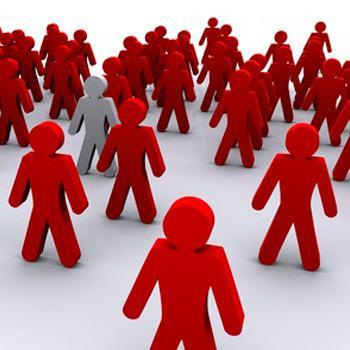 The trial of George Zimmerman has sparked an unprecedented level of conversation about the practice of racial profiling. As distasteful and inexcusable as racial/ethnic profiling is, the practice of activity profiling is a useful and legitimate tool for law enforcement and anyone else involved in crime prevention. Unfortunately, the race card is too often played in an attempt to place a racial focus on suspicious activity—and to incorrectly label activity profiling as being racially motivated.
The trial of George Zimmerman has sparked an unprecedented level of conversation about the practice of racial profiling. As distasteful and inexcusable as racial/ethnic profiling is, the practice of activity profiling is a useful and legitimate tool for law enforcement and anyone else involved in crime prevention. Unfortunately, the race card is too often played in an attempt to place a racial focus on suspicious activity—and to incorrectly label activity profiling as being racially motivated.
That thought resonated with me when I considered a recent personal experience. As I drove up to my place of business, a manufacturing facility surrounded by other similar businesses, located on a street with no sidewalks, I saw a person standing in the driveway. I immediately became suspicious, because I rarely see anyone walking in the area, the driveway is gated, it was a weekend so all the businesses were closed, and I had made no plans to meet anyone.
My suspicion was aroused because the activity—a person standing in the driveway– was so unusual. As I approached the driveway, I saw that the person was a black man who appeared to be in his mid twenties. I stopped and asked if he was waiting for someone and he said that he was walking home from the store and had stopped to rest. I acknowledged his response, drove up to the gate, opened it and drove in. That is the end of the story.
Yet it could have turned out much differently, perhaps tragically. Had I gotten out of my vehicle and approached the person aggressively, I could have gotten into an altercation– I could have become George Zimmerman. Had that occurred, I have no doubt that I would have been accused of racial profiling and it would have been claimed that my reason for stopping and confronting the person was racially motivated.
My accusers would have ignored that the activity of standing in a driveway of an obviously closed business, in an area with no houses close by, is a bit suspicious. They would have ignored the possible reason for the activity was to scout the area before committing a crime. The fact that I was white and the person engaging in what I considered suspicious activity was black, would have been the only requirement for the race baiters to shift into high gear.
Considering the distance from the driveway to any residential area, I have to seriously question the “walking home and stopping to rest” explanation. But there are hundreds of reasons the person could have been standing there, and frankly, they were none of my business. Had I been concerned, I would have called the police, but I didn’t. Whatever the reason he was standing in the driveway, it appeared to pose no threat to myself or anyone else, and the fact that he was black didn’t even enter the equation. I simply saw potentially suspicious activity, evaluated it, and decided upon what I thought was an appropriate course of action.
I believe that Trayvon Martin’s activity on that fateful night appeared equally suspicious to George Zimmerman. Zimmerman is the only person who can either confirm or deny that, but considering his recent experiences, he is not likely to do either one. What can’t be denied is that Zimmerman exercised poor judgment in following Martin. It was that judgment which led to an altercation and a shooting that could have been easily avoided. And it was equally poor judgment on the part of the media, the prosecution and a few people in Washington DC that turned a tragic death into a circus of racial finger pointing.
And as fingers began pointing and counter pointing, the altercation itself and its outcome became secondary considerations. Race took center stage– not to serve justice, but to serve an agenda of stirring racial controversy. That will continue to be the case in future inter-racial conflicts. And irrespective of evidence to the contrary, or lack thereof, as long as race baiters can play to a receptive audience, racial profiling will be cited as the prime motivation for any inter-racial conflict, especially those that end in tragedy.
Justice is best served through the presentation of legitimate evidence. When the race card is played in an attempt to trump evidence, it becomes as much a subversion of justice as racial profiling.

